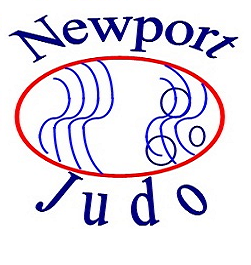Kano’s Encounter with Karate
Kano Jigoro, the founder of Judo, sought to create a martial art emphasizing efficiency and mutual benefit. His approach focused on physical fitness, discipline, and mental growth, making Judo a holistic practice rather than just a combat method. The relationship between Judo’s Kano and Karate began during the early 20th century when Karate emerged from Okinawa. Karate was transitioning from a secretive Okinawan practice into a formalized Japanese martial art. Kano recognized Karate’s potential value and encouraged its development within Japan.
In 1922, Gichin Funakoshi, often called the father of modern Karate, demonstrated Karate in Tokyo at the request of Kano. This event introduced Karate to the Japanese public and established its connection with Judo. Kano admired Karate’s striking techniques and the discipline it required, seeing similarities with Judo’s emphasis on character development and respect.
 |
| Stand Tall: Respect and Affect For More Information OR Book A Class |
Collaboration and Mutual Support
Kano’s support for Karate went beyond admiration. He invited Karate instructors to teach at the Kodokan, Judo’s headquarters. This decision helped legitimize Karate as a respected martial art within Japan.
Although Judo and Karate differ in their primary methods—grappling versus striking—Kano believed both arts could coexist harmoniously. He promoted cross-training and the idea that martial arts should share a common goal: improving individuals and society. This vision reflected Kano’s educational philosophy of seiryoku zen’yo (maximum efficiency) and jita kyōei (mutual welfare and benefit).
Lasting Influence on Modern Martial Arts
The interaction between Judo’s Kano and Karate shaped the development of Japanese martial arts during the early 20th century. Kano’s endorsement helped Karate gain acceptance within Japan’s martial arts community and later within educational institutions.
Today, Judo and Karate both stand as Olympic sports, symbolizing Kano’s dream of international recognition. Their shared history illustrates how collaboration between martial arts leaders can influence cultural and educational progress. Without Kano’s encouragement, Karate might not have achieved the same level of integration into Japanese society.
The mutual respect between Kano and Funakoshi demonstrates the enduring importance of openness and adaptability in martial traditions. Their relationship highlights the power of vision in shaping the future of martial arts worldwide.
Additional Insight from MartialArtsJudo.info
For a deeper understanding of Kano’s educational philosophy, the development of the Seiryoku Zenyo Kokumin Taiiku kata—designed to embody maximum efficiency in physical education—is explored in an excellent article on MartialArtsJudo.info. It illustrates how Kano applied his philosophy to both martial training and national fitness. Seiryoku-Zenyo-Kokumin Taiiku no Kata
References
- International Judo Federation – Kano Jigoro
- Shotokan Karate of America – Funakoshi and Kano
- Judo Info – History of Judo
- MartialArtsJudo.info – Seiryoku-Zenyo-Kokumin Taiiku no Kata
Book A Class
 Random thought on Life, Judo Olympics, Judo Self Defense, The Art or Judo Kata, Judo An International Sport. Things that inspire or annoy me or things that I just had to write down.
Random thought on Life, Judo Olympics, Judo Self Defense, The Art or Judo Kata, Judo An International Sport. Things that inspire or annoy me or things that I just had to write down.

No comments:
Post a Comment